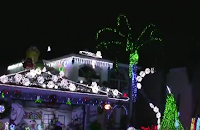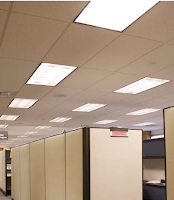The opportunity in the LED retrofit market is enormous, and the missteps made in rushing other energy-efficient lighting to market (e.g., the compact fluorescent lamp) are less likely to slow market growth this time around. Experts say the science behind solid-state lighting, its quick return on investment, and ease of retrofit installation will result in a win for manufacturers, contractors, end-users and, ultimately, the environment.
The Department of Energy (DOE) predicts that LEDs will become the dominant light source in the United States by 2025. Rather than a market share based on dollars, the DOE calculates market share based on lumen hours, or demand for light over time. By that measure, the DOE predicts LEDs will have 59 percent of market share in a little more than a decade. That’s a tall order, but should it happen, U.S. lighting energy consumption will be sliced by nearly one-half, according to the DOE.
The DOE’s study didn’t focus on LED lighting retrofit per se, but it is clear that a great deal of the low-hanging fruit lies in the replacement of fluorescent lamps in commercial and institutional settings. Regulations have eliminated a majority of magnetic T12 lamp ballasts as well as the majority of linear T12 lamps. But according to the DOE, at last count, more than 500 million T12 lamps were in operation, including approximately 400 million 4-foot lamps. Obviously, there are other fluorescent options ahead of the LED as replacements for those T12s—namely the T8 and T5—but LED manufacturers are slowly applying this technology to a range of traditional lighting sources.
“The growth market for replacement of ceiling troffers is humongous. There are 2 billion sockets waiting to be filled in commercial settings, including office buildings, universities and hospitals,” said John Casadonte, marketing manager for lighting at Cree Inc., a company that manufactures lighting products and semiconductors for power and radio frequency (RF) applications.
Forget the T12 fluorescent. Casadonte said LEDs should leapfrog newer products like the T8.
“Some universities are just now considering replacing T12s with T8s. It’s up to us to convince them that the newer technology is in their best interest,” he said.
While the LED market, as a percentage of the installed base is still quite small, companies that manufacture retrofit LED systems are making big bets on the future of the LED. Rob Freitag is vice president of marketing at EYE Lighting International, a company that has traditionally focused on metal halide, high-pressure sodium, and mercury lamps for outdoor applications (including parking lots, loading docks, and sporting facilities) as well as for large interiors (such as warehouses or big-box retail stores).
There are tens of millions of lamps ripe for replacement by LEDs, Freitag said, adding that, “The LED is our greatest opportunity for growth in the coming years. They will become the majority of our lamp sales over the next decade.”
Adapted from an article at http://www.ecmag.com.
















